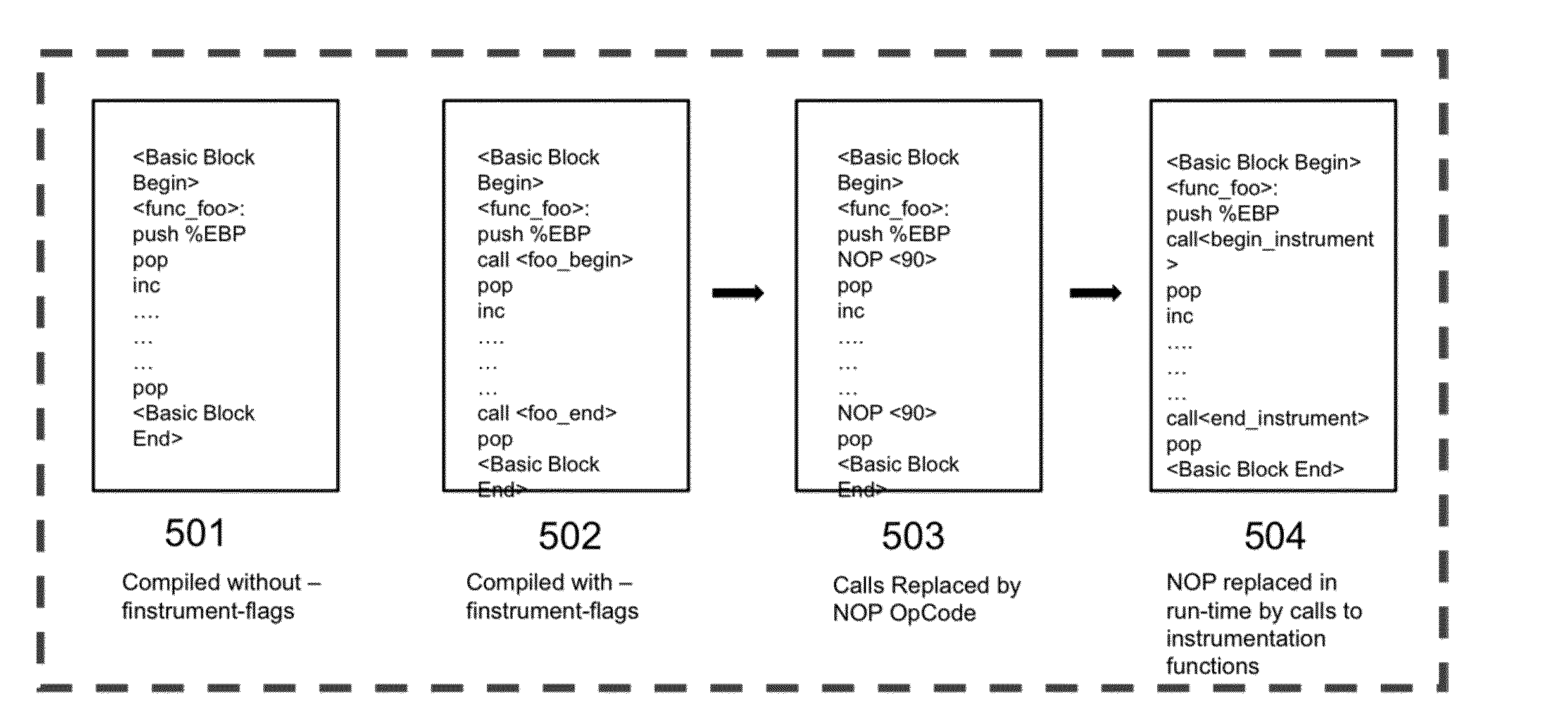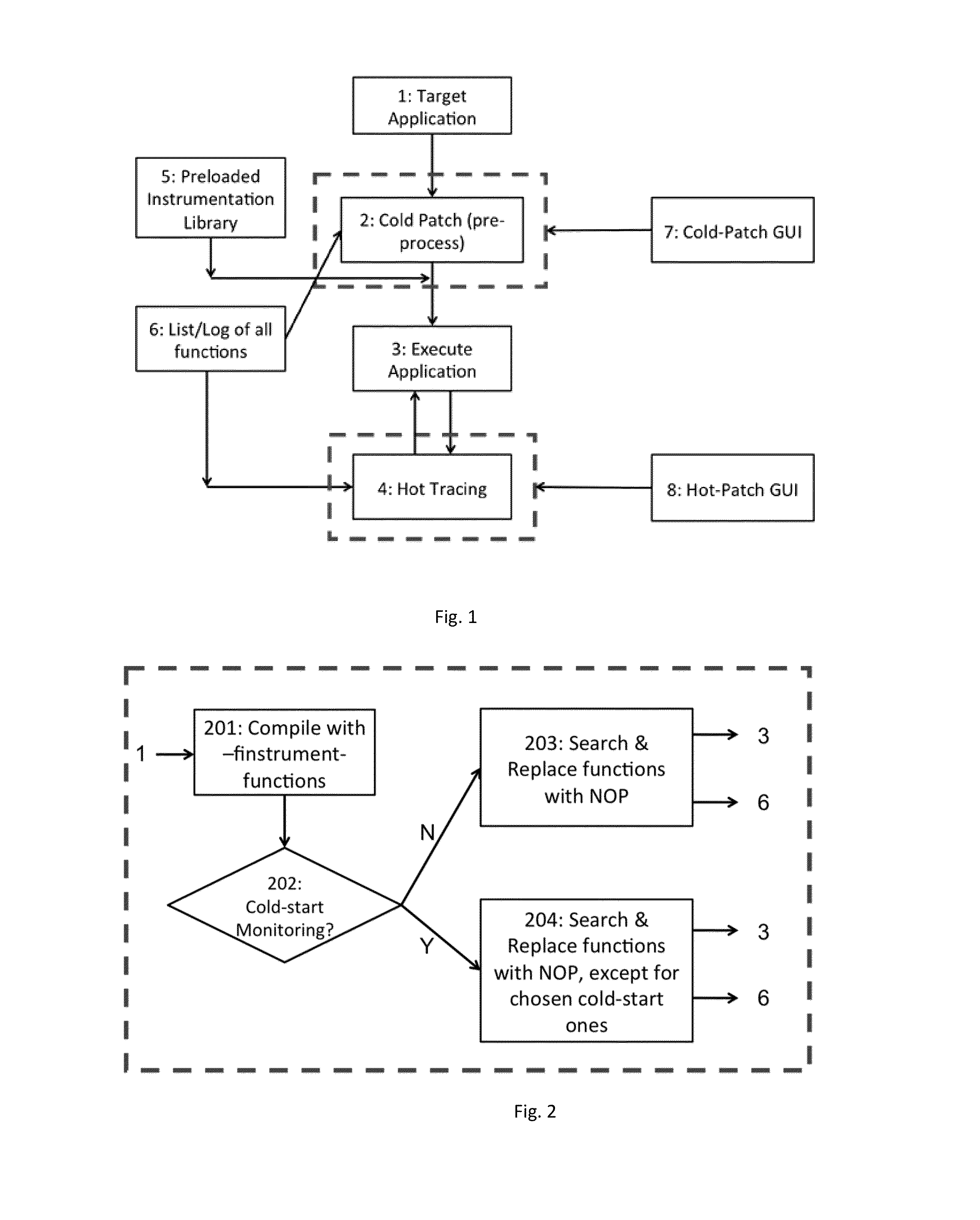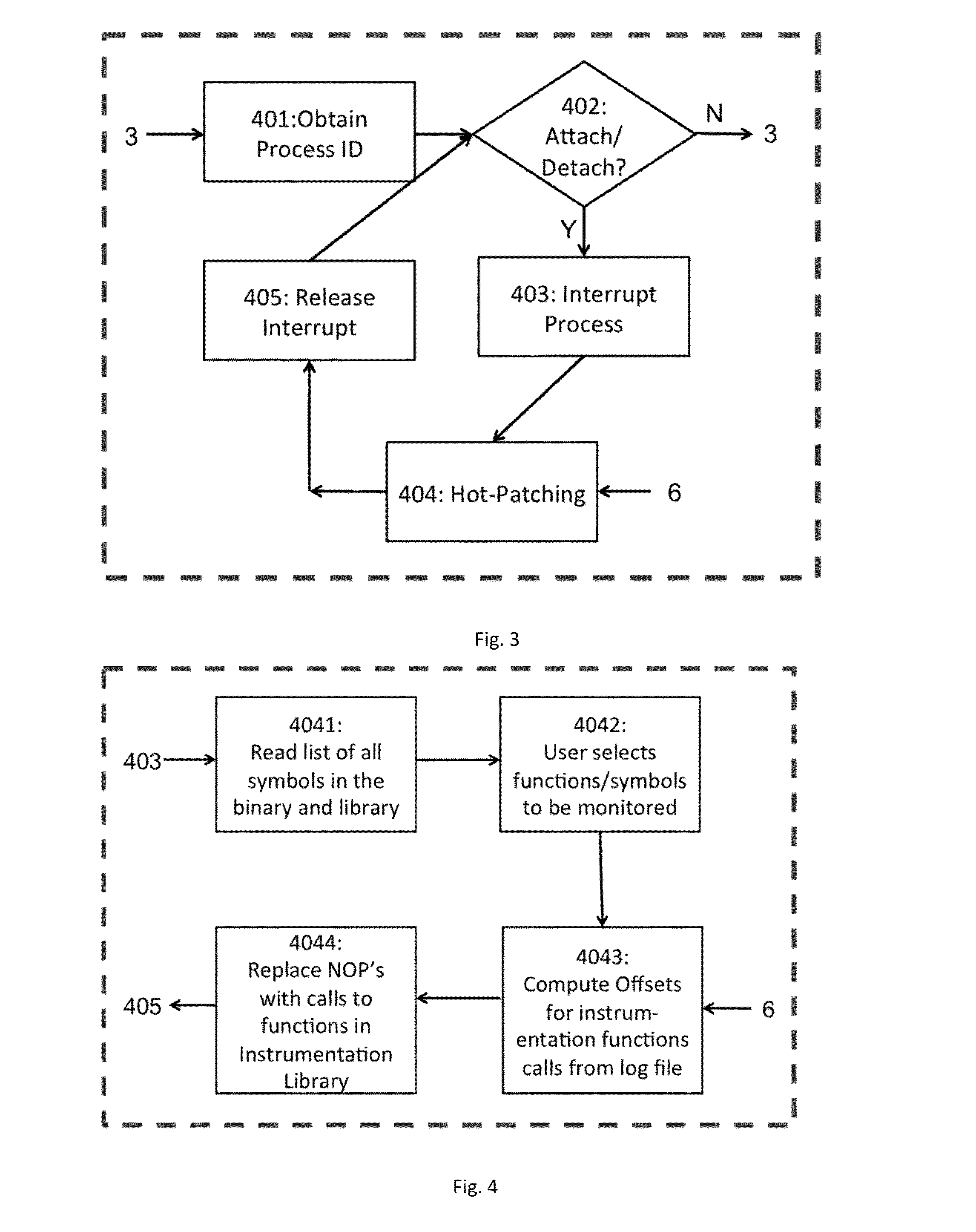Method and System for Computer Assisted Hot-Tracing Mechanism
a technology of hot-tracing mechanism and computer assisted technology, applied in the field of software system performance diagnosis, can solve problems such as difficult detection, inability to test in real-world scenarios, and hidden bugs/mis-configurations etc. of large-scale complex systems
- Summary
- Abstract
- Description
- Claims
- Application Information
AI Technical Summary
Benefits of technology
Problems solved by technology
Method used
Image
Examples
Embodiment Construction
[0037]The present invention is directed to a mechanism to leverage commonly used / available compiler flags in GNU C / C++ compilers(-instrument-functions) and use them for a completely novel workflow to provide an easy to use dynamic instrumentation mechanism. One of the major advantages of leveraging already existing compiler flags is that we need no compiler modification, and we are still able to outperform existing binary only approaches. Another key feature is that we allow the application to run in it's native environment instead of making a middle layer (as is done by most existing systems), this provides ease of use, and easy adaption by the user.
[0038]The invention implements I-Probe by post processing the binaries generated (in a mechanism called “coldpatch”) and then introduce instrumentation at runtime (“hotpatch”). The inventive mechanism has a “zero probe effect” i.e. there is no overhead when it is not turned on. The instrumentation can capture both function entry and exi...
PUM
 Login to View More
Login to View More Abstract
Description
Claims
Application Information
 Login to View More
Login to View More - R&D
- Intellectual Property
- Life Sciences
- Materials
- Tech Scout
- Unparalleled Data Quality
- Higher Quality Content
- 60% Fewer Hallucinations
Browse by: Latest US Patents, China's latest patents, Technical Efficacy Thesaurus, Application Domain, Technology Topic, Popular Technical Reports.
© 2025 PatSnap. All rights reserved.Legal|Privacy policy|Modern Slavery Act Transparency Statement|Sitemap|About US| Contact US: help@patsnap.com



